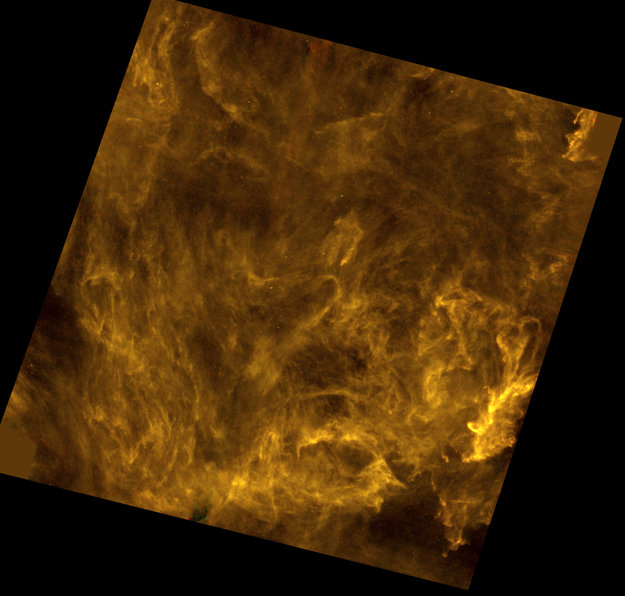Filamentos interestelares en Polaris
3 enero 2017
En el momento de inaugurar otro año en el calendario, y con la sensación de un nuevo comienzo, disfrutemos de la imagen de esta red de polvo y gas, que muestra un fragmento del firmamento en el que podrían llegar a nacer nuevas estrellas.
Se trata de la región de Polaris, a 490 años luz de distancia. Fue fotografiada por el observatorio espacial Herschel de la ESA en 2011 y lo que aquí vemos es una composición en color de la zona.
En ella se observa una maraña de filamentos interestelares. Estos filamentos pueden extenderse varias decenas de años luz por el espacio y preludian la formación de estrellas, que a menudo se encontrarán en las partes más densas del conjunto.
Incrustados en los filamentos se aprecia cierto número de manchas más densas de materia, pero por el momento apenas alguna parece ser el germen de futuras estrellas. Por su aspecto actual, estos filamentos no son lo suficientemente masivos para permitir la formación de estrellas.
Está por ver si esta región, actualmente tranquila, se convertirá en el futuro en una incubadora estelar.
La imagen fue tomada por los instrumentos PACS (cámara y espectrómetro con conjuntos de detectores fotoconductores) y SPIRE (receptor de imágenes espectrales y fotométricas) de Herschel a unas longitudes de onda de infrarrojos de 250, 350 y 500 micras.

- Title Interstellar filaments in the Polaris Flare
- Released 03/01/2017 10:30 am
- Copyright ESA and the SPIRE & PACS consortia, Ph. André (CEA Saclay) for the Gould’s Belt Survey Key Programme Consortium, and A. Abergel (IAS Orsay) for the Evolution of Interstellar Dust Key Programme Consortium
- DescriptionJust as the new calendar year begins, and with it a feeling of new beginnings, so this network of dust and gas shows a portion of sky where star birth is yet to take hold.This area is known as the Polaris Flare, a region of dust and gas seen along the line of sight towards Polaris, the North Star in the constellation of Ursa Minor, and 490 light-years from Earth. It was imaged by ESA’s Herschel space observatory in 2011; a colour composite is presented here.It shows several tens of tangled interstellar filaments. Such filaments can stretch for tens of light-years through space and can precede the onset of star formation, with newborn stars often found in the densest parts.Embedded within the filaments are a number of denser patches of material, but hardly any currently appear to be the seeds of future stars. As they are now, the filaments are simply not massive enough to support star formation.Whether or not this currently calm region becomes a stellar nursery in the future remains to be seen.The region was imaged by Herschel’s Spectral and Photometric Imaging Receiver at infrared wavelengths of 250, 350 and 500 microns.
- Id 371467
Guillermo Gonzalo Sánchez Achutegui
ayabaca@gmail.com
ayabaca@hotmail.com
ayabaca@yahoo.com
Inscríbete en el Foro del blog y participa : A Vuelo De Un Quinde - El Foro!


No hay comentarios:
Publicar un comentario